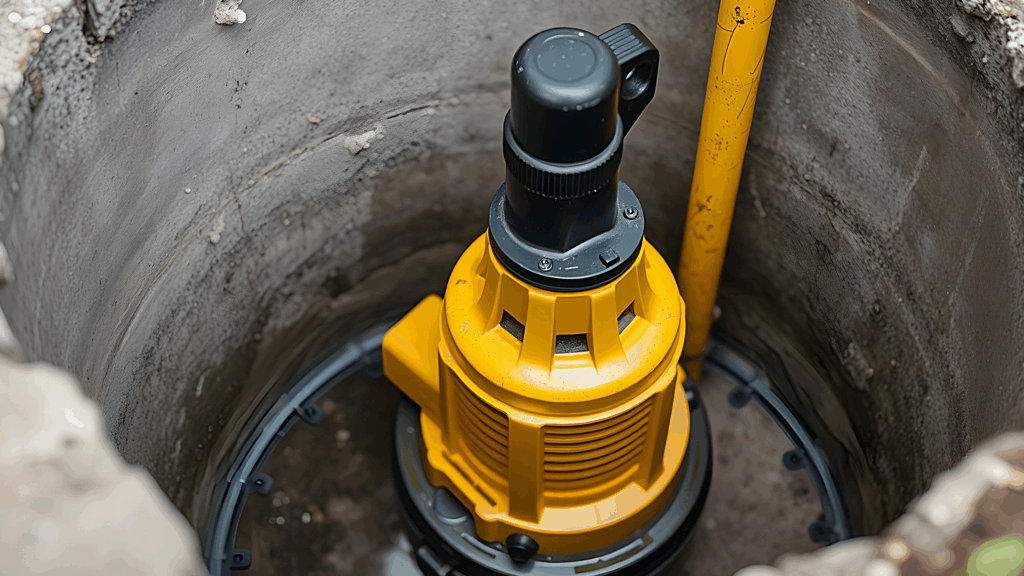For many homeowners in Minneapolis and St. Paul, a dry basement is essential, whether it’s a finished living space, a storage area, or a laundry room. Your sump pump is the primary defense against water intrusion and flooding, especially as the ground becomes saturated with fall rain. Don’t neglect this vital piece of equipment. Northern Benjamin Franklin Plumbing can guide you through the necessary steps to help you avoid costly water damage, mold growth and a major headache!
To help you avoid a basement disaster, check out this comprehensive sump pump check-up guide from your local plumbing experts.
1. Inspect the sump pit and pump
Grab a flashlight and start by looking inside the sump pump, which is usually a covered hole in your basement. Remove the cover and take a look. Is there dirt, debris or other objects that have fallen in since the last time you checked? Remove them now so you don’t have to worry about clogging the pump’s intake. Make sure the pump itself is standing upright and stable. A tilted pump can put a strain on the motor and reduce its efficiency.
2. Check the float switch
The float switch in a sump pump is usually a ball or a cylinder attached to a lever or rod. It rises with the water level in the sump pump and tells the pump when it’s time to turn on. Once you’ve found it, gently lift the float to ensure it moves freely and isn’t blocked by anything. If the float is stuck, the pump won’t activate when the water level rises, which can quickly lead to flooding.
3. Test the sump pump’s operation
To test your pump, pour a few gallons of water into the sump pit. Watch to see if the pump activates automatically once the water level rises to the float switch’s set point. The pump should turn on, quickly and efficiently discharge the water, and then shut off. Listen for any unusual noises, like grinding or rattling, which could signal a problem.
4. Examine the discharge pipe
Your sump pump’s discharge pipe is usually found exiting the basement wall and running into a PVC pipe or storm drain outdoors. Follow that pipe and make sure it’s free of obstructions, kinks, or damage. The pipe’s outlet should be clear and direct water away from your foundation. In winter, a frozen discharge pipe can cause water to back up into your basement, so it’s wise to take care of clogs now. Your Northern Benjamin Franklin plumbers can quickly diagnose problems like a clogged discharge pipe and address them before the next heavy rain.
5. Inspect the check valve
Most sump pump systems have a check valve on the discharge pipe. This valve prevents water that has been pumped out from flowing back into the pit. A faulty check valve can cause the pump to cycle on and off more often than necessary, shortening its lifespan. You should hear a slight click as the valve closes when the pump shuts off.
6. Review the power supply
Your sump pump relies on electricity, and a faulty power supply can lead to a wet mess. Ensure your pump is plugged into a dedicated, grounded outlet. Is the electrical cord in good condition? Check for fraying or damage and give us a call if you find any problems. Remember, always avoid using extension cords, which can reduce the power to the pump and pose a safety risk.
7. Consider a battery backup system
That power supply isn’t going to be very helpful if the power goes out. One good fall storm is all we need to trigger a power outage and a flooded basement, and that’s no way to start the colder season. Installing a battery backup sump pump system offers peace of mind, ensuring your basement stays protected even when the electricity goes out.
8. Schedule professional maintenance
While these DIY checks are helpful, a yearly professional check-up is recommended. The licensed plumbers at Northern Benjamin Franklin Plumbing can perform a thorough inspection during your scheduled plumbing maintenance visit. We’ll check the sump pump and make sure it’s working correctly, letting you relax with the knowledge that it’s ready to take on whatever the winter months throw at us.
Don’t wait for a heavy rainstorm to find out if your pump is working correctly. By being proactive, you can ensure your basement stays dry and your home remains safe throughout the fall and winter seasons. If you’d like to schedule a professional sump pump inspection or have any concerns about your system, contact Northern Benjamin Franklin Plumbing today at (320) 559-3407 or schedule your appointment online by clicking the “schedule now” button on our website. Northern Benjamin Franklin Plumbing is here to keep your home protected and dry throughout every season. Thanks for trusting your home to us.



